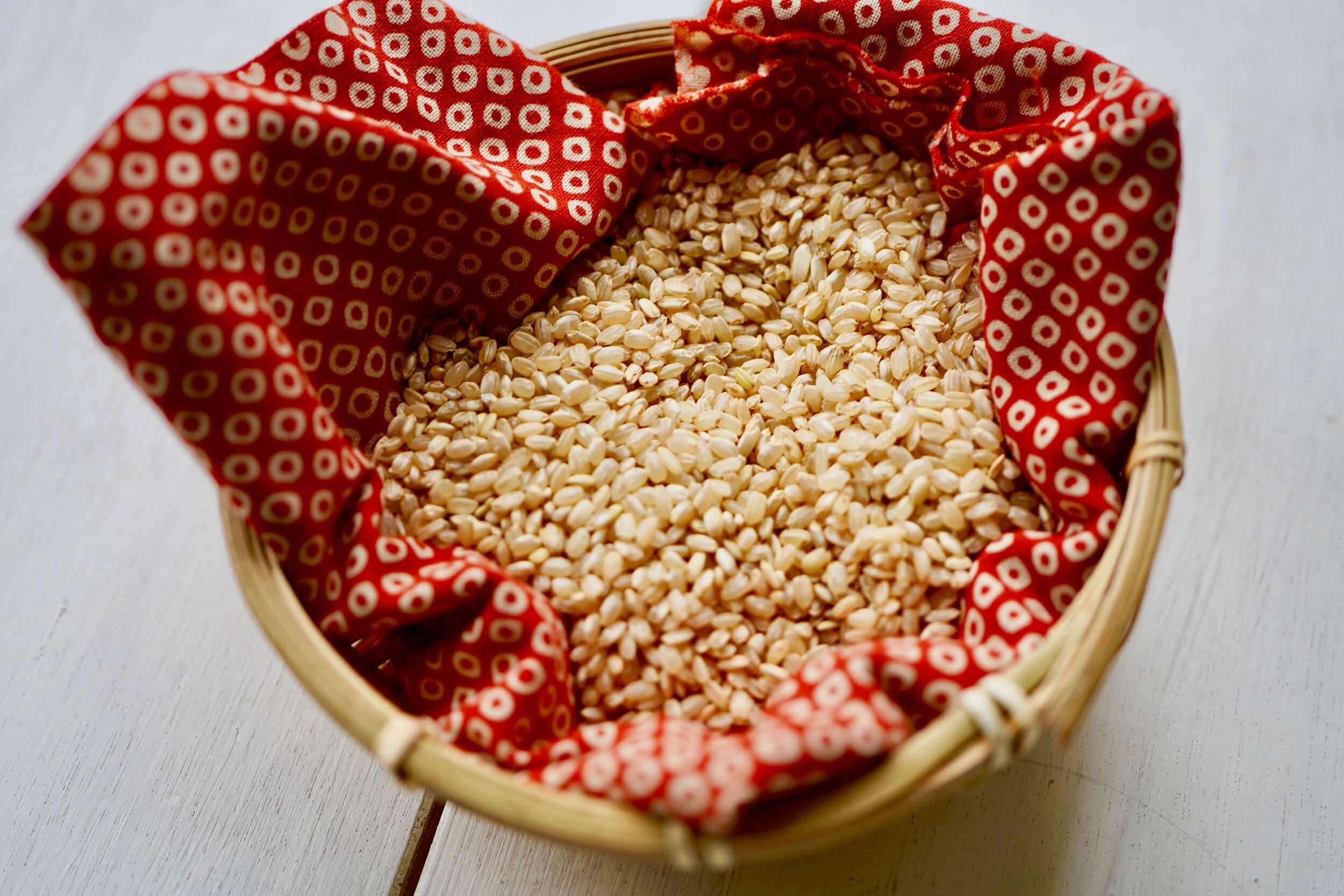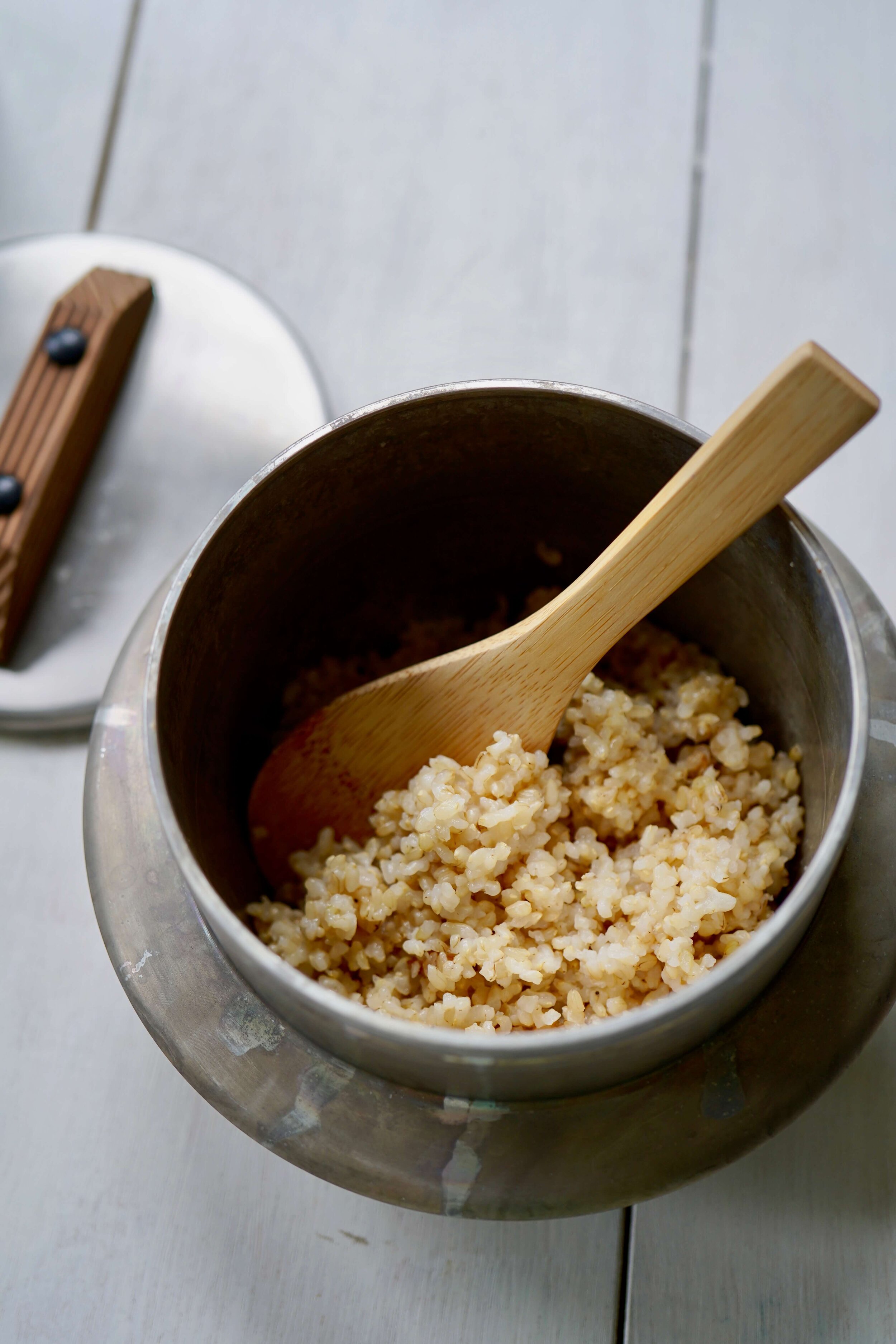Brown Sushi Rice
Japanese rice is short grain and sticky when cooked. For everyday meals, we usually eat white rice in which the bran part, nuka, has been polished away during the milling process, creating beautiful, shiny rice. We also eat brown rice, genmai, which has more fibre and is high in minerals. Traditionally, brown rice would not be used for sushi in Japan, but it’s nice to have the option and it is becoming increasingly popular. I love chatting about rice and its place within Japanese culture, if you’d like to find out more I recently recorded a podcast for BBC Good Food, you can listen to it here.
When making sushi it is important to use good quality rice and prepare it carefully as the main part of sushi is made from rice and should be treated with as much respect as the fish and toppings. Sushi rice is prepared in a similar way to Japanese steamed rice (link to blog) but with a solution of vinegar, salt and sugar stirred through. This mixture is not only there to flavour the rice but to protect it from harmful bacteria, we have to be very mindful of this when preparing raw fish and rice.
When making your own sushi, it is crucial that you use Japanese rice, which can easily be found in local supermarkets, Asian shops or online. You don’t need any special equipment to cook it: I never use a Japanese rice cooker, just a 20cm non-stick saucepan with a glass lid (you shouldn’t open the lid when cooking rice). I use a large wooden bowl to make the rice, but you can use a deep dish or roasting pan. The most important thing is that it is fairly flat, so that the rice isn’t layered too deeply and therefor can be cooled quickly.
When the production team came over to shoot the photographs for my book I picked out my favourite Japanese fan to cool the rice in the traditional way. I confided in the team that my secret trick is using a hairdryer to cool down the rice and prevent it from becoming too sticky. They loved this idea and convinced me to put it into my book as, although the fan was very beautiful, a hairdryer does the trick so much faster and it’s something that we all have around the household. I now love the photos they took of me cooling down my rice, hairdryer in hand! You can see this recipe and more great sushi ideas in my book Sushi at Home.
Follow @yukiskitchen on Instagram
If you are making sushi rice, try to eat it in within 24 hours as it is safest and the flavour and texture will be better. Avoid keeping your sushi rice in the fridge as it tends to take on an unpleasant plastic flavour. If you want to store it, it is far better to freeze it in portions and then defrost when you would like to use it. If you’d like to learn more techniques for preparing sushi then you can sign up to one of my classes.










